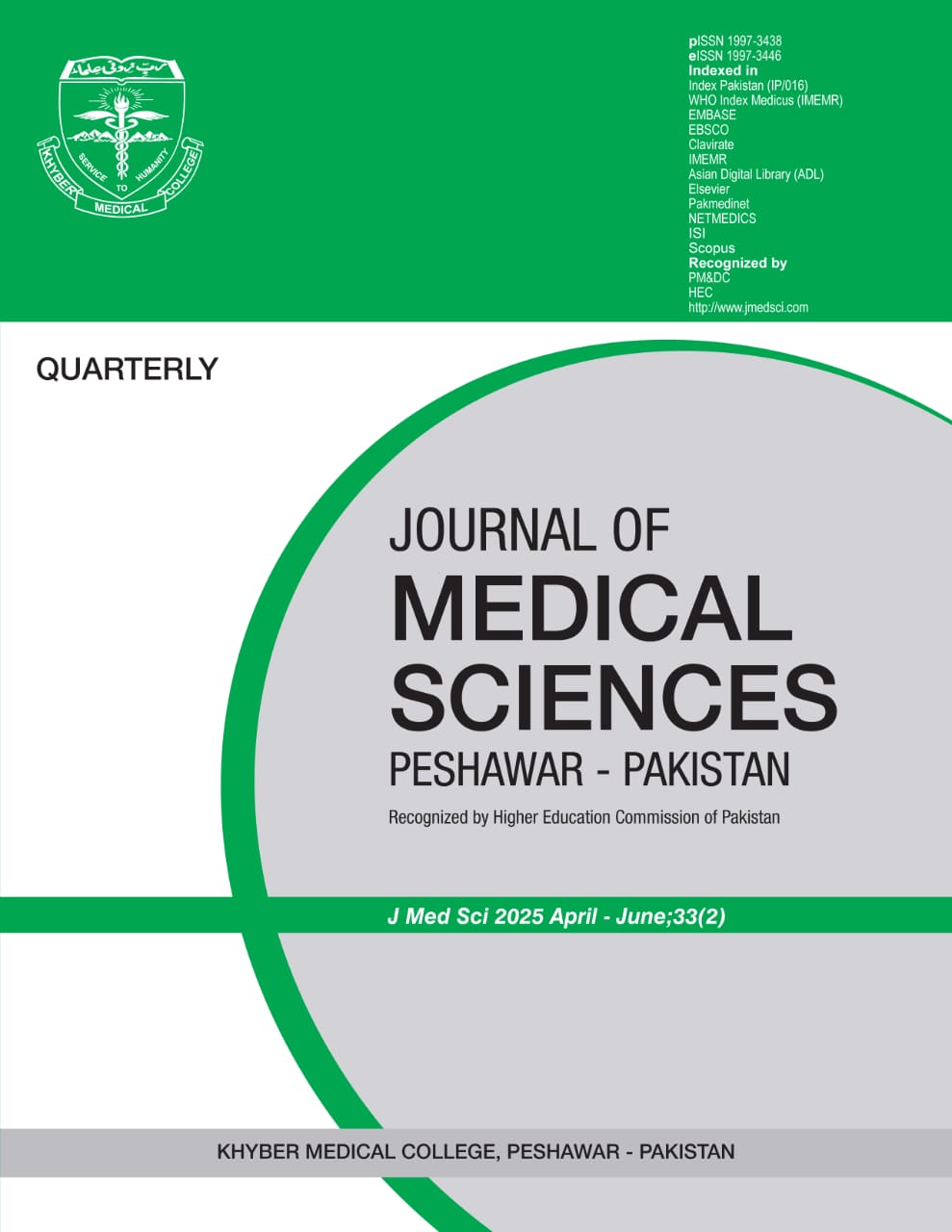DIAGNOSTIC ACCURACY OF FLUID-ATTENUATED INVERSION-RECOVERY MAGNETIC RESONANCE IMAGING IN DETECTION OF ACUTE SUBARACHNOID HEMORRHAGE IN PATIENTS PRESENTING WITH SEVERE HEADACHE KEEPING LUMBER PUNCTURE AS GOLD STANDARD
DOI:
https://doi.org/10.52764/jms.23.31.4.9Abstract
ABSTRACT
OBJECTIVE: To evaluate the diagnostic efficacy of FLAIR MRI in identifying acute SAH among patients who present with severe headache, using LP as the gold standard.
MATERIALS AND METHODS: This was descriptive cross-sectional study conducted from 3nd September 2020 to 3rd Feb, 2021 at Department of Radiology, Khyber Teaching Hospital, Peshawar. Sample size was 266 collected via non-probability sampling technique.
RESULTS: The mean age was 46.3 + 14.1 years, (58.6% male, 41.4% female). On FLAIR-MRI, SAH was observed in 65.4% of patients while on follow up LP, SAH was recorded in 57.5% of patients. Sensitivity of FLAIR-MRI was found to be 91.5% and specificity 69.9%. The positive predictive value of the FLAIR-MRI was 80.5% and negative predictive value was 85.8%.
CONCLUSION: FLAIR-MRI has good sensitivity and specificity for the detection of SAH. As such, it is a useful radiological tool for diagnosis of SAH in adults and further studies are recommended to confirm its usefulness
Key words: Magnetic resonance imaging, lumber puncture, subarachnoid hemorrhage, headache
Downloads
Published
How to Cite
Issue
Section
License
Copyright (c) 2023 Humaira Anjum, Samia Iftikhar

This work is licensed under a Creative Commons Attribution 4.0 International License.
All articles published in the Journal of Medical Sciences (JMS) are licensed under the Creative Commons Attribution 4.0 International License (CC-BY 4.0). Under the CC BY 4.0 license, author(s) retain the ownership of the copyright publishing rights without restrictions for their content, and allow others to copy, use, print, share, modify, and distribute the content of the article even for commercial purposes as long as the original authors and the journal are properly cited. No permission is required from the author/s or the publishers for this purpose. Appropriate attribution can be provided by simply citing the original article. The corresponding author has the right to grant on behalf of all authors, a worldwide license to JMS and its licensees in all forms, formats, and media (whether known now or created in the future), The corresponding author must certify and warrant the authorship and proprietorship and should declare that he/she has not granted or assigned any of the article’s rights to any other person or body.
The corresponding author must compensate the journal for any costs, expenses, or damages that the JMS may incur as a result of any breach of these warranties including any intentional or unintentional errors, omissions, copyright issues, or plagiarism. The editorial office must be notified upon submission if an article contains materials like text, pictures, tables, or graphs from other copyrighted sources. The JMS reserves the right to remove any images, figures, tables, or other content, from any article, whether before or after publication, if concerns are raised about copyright, license, or permissions and the authors are unable to provide documentation confirming that appropriate permissions were obtained for publication of the content in question.




